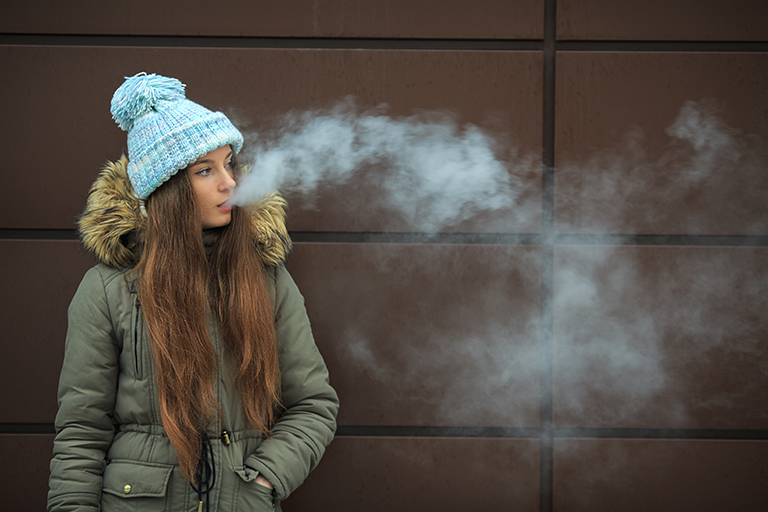Nearly one-fourth of 12th-grade students in Indiana reported having used a vaping device in the month prior to taking the 29th Indiana Youth Survey, which was administered in Spring 2020 by the Institute for Research on Addictive Behavior at Prevention Insights, part of the Indiana University School of Public Health-Bloomington.
While the percentage of 12th-grade students who reported using a vaping device was lower than in 2018, the rate was slightly higher than in 2016, when the question was first added to the survey. Vaping was the second most common substance used by Indiana teens, with female students in all grades except 12th reporting higher rates of vaping than male students.
"The decrease we saw from 2018 may be due to the heightened awareness of the dangers of vaping, which have become clearer after the outbreak of deaths and illnesses reported in the media," said Ruth Gassman, the principal investigator of the study. "Given that vaping devices may contain extremely high levels of nicotine, THC, and/or other chemicals, it is of grave concern that so many Indiana youth continue to use these products."
Jon Agley, deputy director of research at Prevention Insights, said the decrease is positive news but time will tell whether the trend continues.
"It's still too early, and the prevalence rates have varied too much, to know whether we have any sort of trend for youth vaping in Indiana," he said.
The survey also found that 5 percent of 6th-grade students reported drinking alcohol in the past month, ranging up to 29 percent for 12th-grade students. Female students reported higher rates of alcohol use in all grades except 6th.
While rates of alcohol and cigarette use have declined steadily in the past two decades, rates of marijuana use have remained relatively unchanged, mirroring national data. Among Indiana 12th-grade students, 17 percent reported using marijuana in the past month.
"Youth are strongly impacted by their perceptions of the community’s norms," Gassman said. "As states enact legislation legalizing or decriminalizing recreational marijuana use, and as messages normalizing marijuana use abound in music, movies, and other media, youth may be interpreting these messages to mean there is little harm or social disapproval in using marijuana."
According to the survey, over two-thirds of 12th-grade students (68 percent) reported believing there is negligible (no or slight) risk of harm from smoking marijuana once or twice a week. Just over half of the 12th-grade students (53 percent) thought that it was wrong or very wrong for someone their age to smoke marijuana. These beliefs may be driving the lack of progress in reducing marijuana use among Indiana youth, and rates of marijuana use did not vary significantly by gender for any grade.
In the 2020 Indiana Youth Survey, for all measured substances, students believed that a much higher percentage of their peers had used each substance than the percentage who had actually used that substance. For example, 12th-grade students on average reported that they believed half of the students in their school (51%) drank alcohol in the past month, whereas only 29 percent of 12th-grade students actually reported drinking alcohol in the past month. A heightened perception of peer substance use is generally associated with higher levels of actual use.
For students who drank alcohol in the past year, parents were the primary source of alcohol for 7th- and 8th- grade students, while high school students students (those in 9th through 12th grade) were most likely to report getting it at a party. Very few students reported purchasing alcohol themselves from a retailer.
The 2020 Indiana Youth Survey was funded by the Indiana Family and Social Services Administration's Division of Mental Health and Addiction. This is the 29th year that the Indiana Youth Survey (formerly called the Alcohol, Tobacco, and Other Drug Use Survey) has been conducted. Originally an annual survey, in 2018 the survey began a biennial administration schedule. In 2020 the survey was administered to over 90,000 students in Grades 6 to 12 in 281 Indiana schools. The survey will next be administered 2022.




